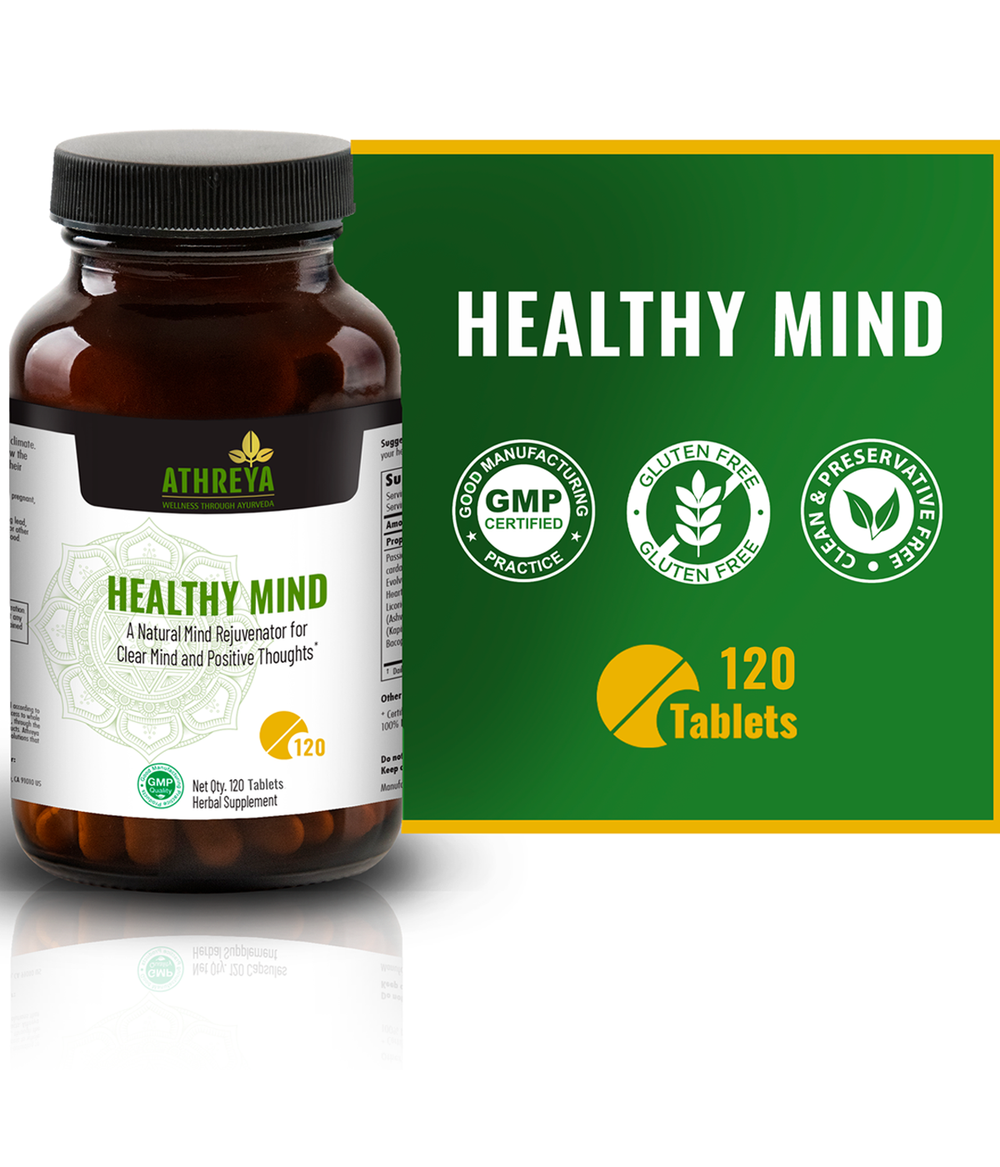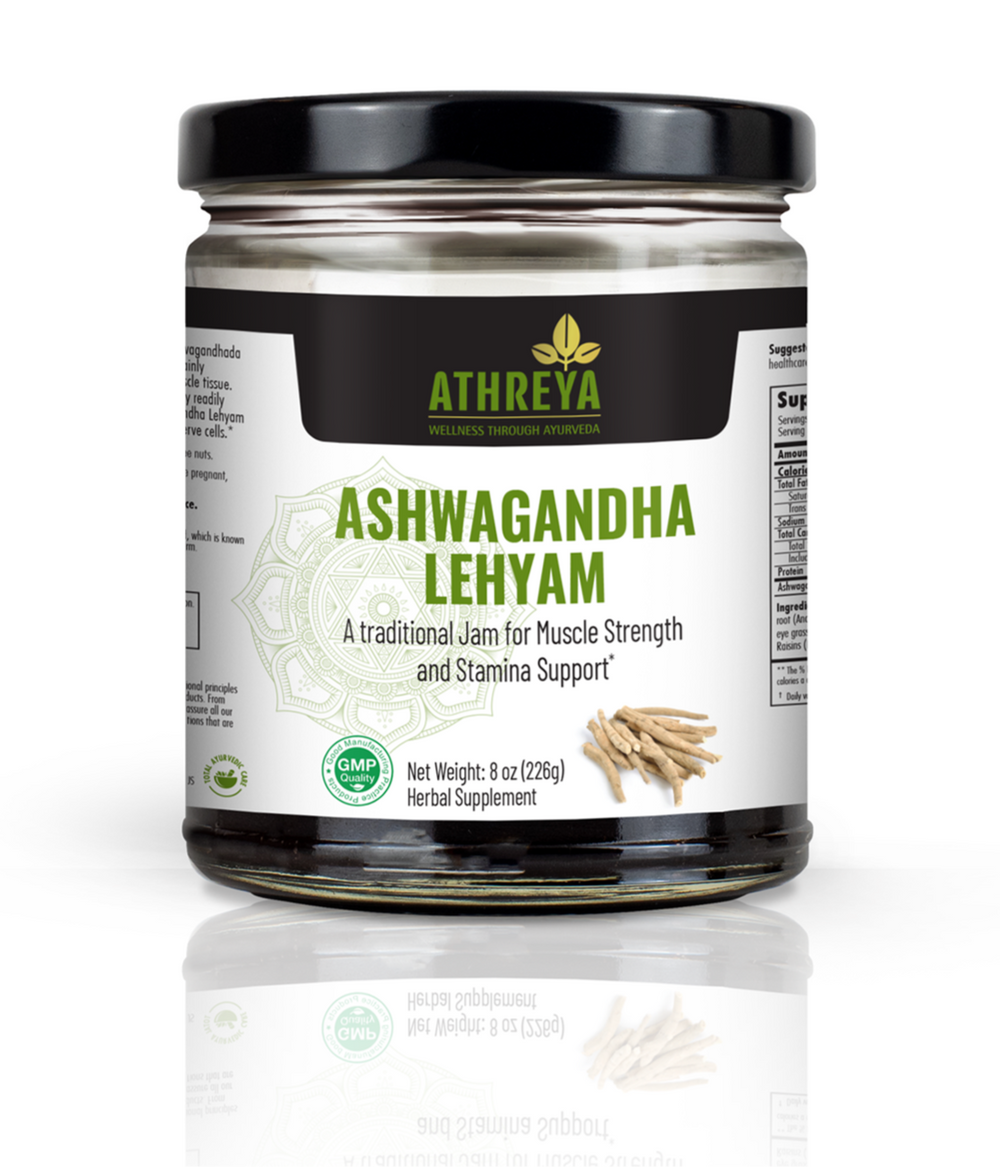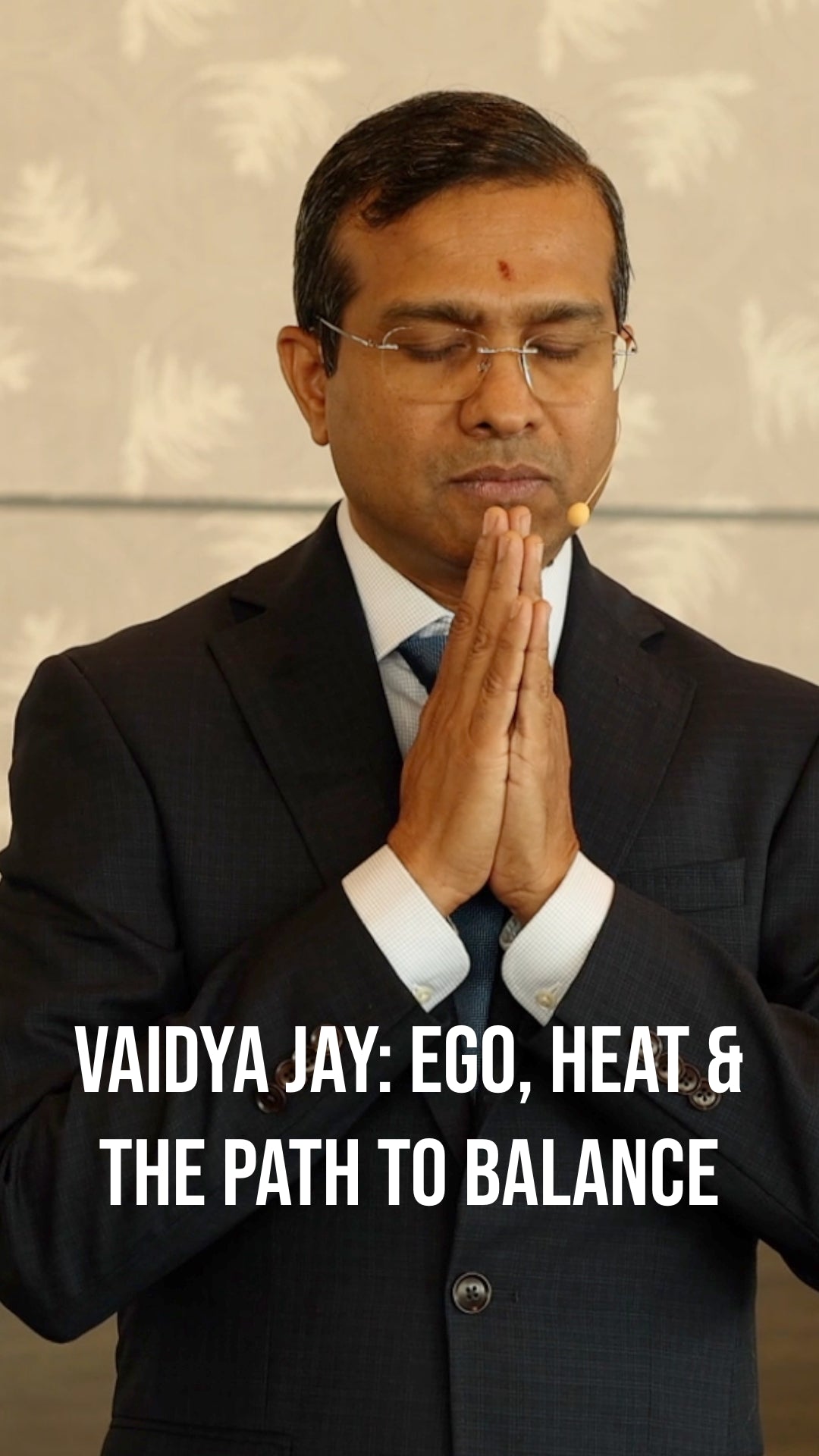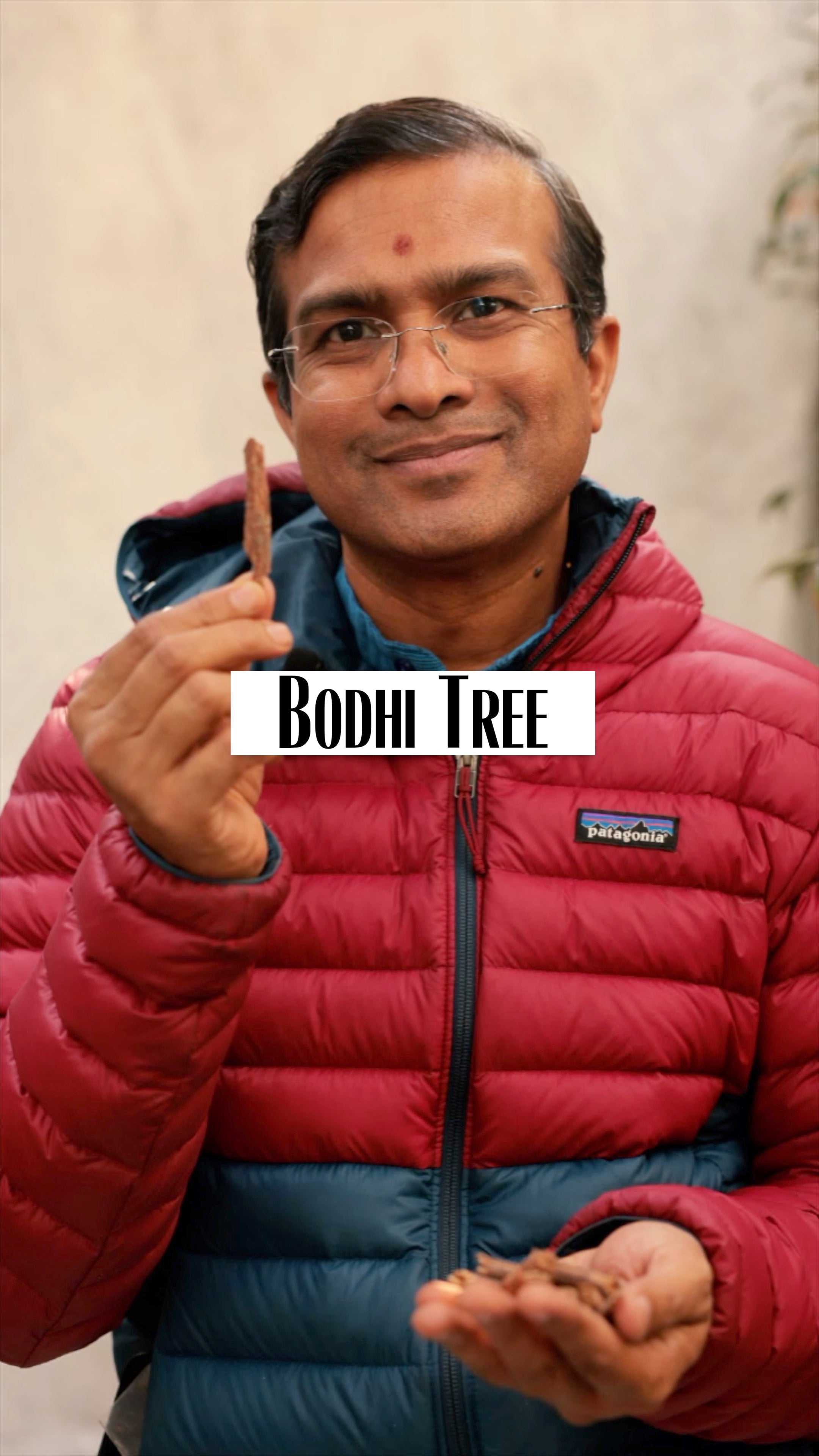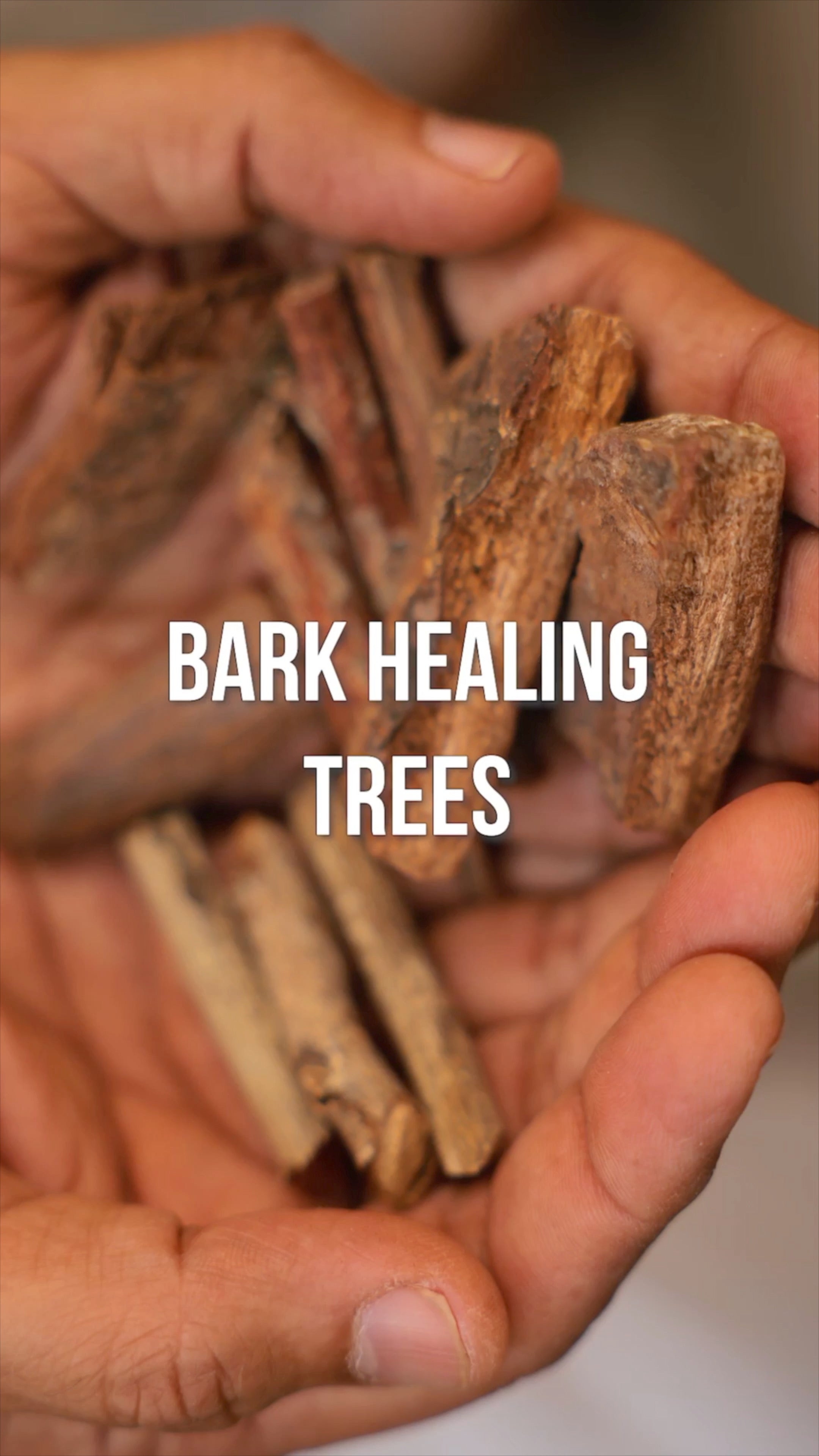Ego, Heat, and the Path to Balance
A Workshop with Vaidya Jay
Introduction: A Return to True Health
The session opens with a simple reminder: true health begins with awareness, not an endless parade of tests. Like tending a car’s fluids before it breaks down, we can tend body and mind before illness takes root. Vaidya Jay—founder and director of Athreya Ayurvedic Integrative Health Center in Long Beach and vice president of Athreya Herbs—frames the gathering as an exploration of physical empowerment, mental wellbeing, and spiritual uplift that together form genuine leadership.
Grounding in Presence
Jay invites everyone to place their feet on the floor, close their eyes, and breathe into the heart. He guides a brief chant and visualization of golden healing light, then a call-and-response—“Peace for my body; peace in my mind”—to remind us that intention sets the tone for long life and clear action.
What Is Happiness?
Happiness, Jay says, expresses itself through body vitality, mental peace, and the soul’s light—yet in Ayurveda, it originates in consciousness and “percolates” into mind and body. He references long-term research showing that social fabric—our relationships, belonging, and cohesion—is the strongest predictor of both happiness and longevity. Even a simple smile can shift our state; connection is medicine.
A Sobering Picture of Health
Despite vast healthcare spending, national happiness has declined and life expectancy has slipped. Prevention still represents a surprisingly small slice of the system—and too often means early detection, not true health creation. Jay notes that disease rarely starts in the body; it begins in the mind, which makes choices the body must carry. Addressing stress, anxiety, and overwhelm is therefore foundational.
Cohesion, Longevity, and the Everyday
Jay points to communities known for healthy longevity. Their secret isn’t a single diet rule; it’s cohesion, purpose, and shared rhythms. The takeaway: we thrive when our daily life is organized around supportive relationships and simple practices that are easier to sustain together than alone.
Ayurveda as Self-Empowerment
Ayurveda—the “science of life”—is a living system meant to be practiced, not just studied. It aligns with the WHO’s person-centered vision of self-care: individuals, families, and communities can promote and maintain health with or without constant professional oversight. Ayurveda is personalized by design: body type, diet, daily and seasonal routines, movement, rejuvenation, and gentle detox are tailored to the person in front of us.
A Human Being: Consciousness, Mind, and Body
Jay offers a simple model: consciousness acts through two instruments—mind and body. Those instruments need regular care so life can be lived fully for a hundred years and beyond. Ayurveda’s twin goals flow from this: maintain health in the healthy (longevity) and relieve disease in the sick (prevention of recurrence). In a truly effective system, Goal #1—health creation—would be rewarded every day.
Macrocosm and Microcosm
We aren’t separate from nature; the same forces that move the world move us. Ayurveda maps these universal forces into three regulatory energies (doṣas): Vata (wind/motion), Pitta (fire/metabolism), and Kapha (water/structure). Mindful living is, in practice, harmonizing our inner weather with the outer weather.
Qualities You Can Feel
Each doṣa has noticeable qualities: Vata tends toward dry, light, cold, and mobile; Pitta toward sharp, hot, and oily; Kapha toward cool, heavy, smooth, and stable. When we notice excess, we choose the opposite quality in food and routine. It’s not moral; it’s mechanical.
Pulse Reading: Personalization in Practice
Jay guides the audience to place three fingers on the radial pulse, feeling for the three energies. Vata can feel quick or skittering, Pitta like a leaping frog—strong and assertive—Kapha like a swan or smooth gliding snake—deep, steady, soft. The purpose isn’t to diagnose; it’s to refine attention so daily choices match what the body is showing now.
A live demonstration follows. Jay feels a fiery pulse, describes tendencies (sensitive digestion, variable sleep, reactive skin), and then connects the dots: when heat is high, sauces, alcohol, and acidic foods add fuel. Balance begins with small, compassionate swaps.
Ego, Heat, and Gentle Swaps
One participant asks how to reconcile a love of spicy foods with a Pitta-dominant pattern. Jay’s insight lands: our ego often identifies with imbalance—“I eat this because I am that.” Awareness loosens that identity. Instead of “cutting spice,” transform it. Choose gentler warming spices that support digestion without stoking inflammation—ginger, black pepper, or even a quick, clean heat like wasabi. Keep the joy; change the effect.
Simple Signs, Simple Corrections
Daily life offers constant feedback. If Vata is high—constipation, coldness, scatter—reach for warmth, moisture, weight, and routine (think oatmeal over dry, crunchy snacks; earlier caffeine cut-off). If Pitta is high—acidity, rashes, irritability—favor soothing foods and calmer pacing. If Kapha is heavy—sluggishness, congestion—lighten meals, move more, and use invigorating spices. You don’t need a lab to notice what’s happening; you need attention and a next right choice.
Tongue Reading and Seasonal Intelligence
Like pulse, the tongue offers real-time clues (coating, color, cracks, moisture). Eating seasonally and locally often gives the body precisely what the environment requires—warmth and moisture in dry seasons, lightness when the air turns heavy. Nature stocks the medicine aisle every week.
Body Type and Current State
Your baseline constitution (prakṛti) doesn’t change; your current state (vikṛti) does. Most of us are mixed types. The goal isn’t to become a label—it’s to reduce present excess and move closer to your personal baseline, day after day.
Learning Together
Partner practice highlights something beautiful: every pulse is unique. Helping one another find it and describe it builds sensitivity and confidence. Cohesion again becomes medicine; we change best in community.
Closing: A Daily Practice
Jay’s closing practice is disarmingly simple. Each morning, sit with consciousness. Acknowledge that body and mind are your helpers. Ask, “What one or two choices today bring me toward balance?” Then do just that—at the table, on the mat, in conversation, and in rest. Over time, the ego’s grip on habits loosens, and awareness becomes the steady guide.
Continue the Journey
If you want personalized support, Jay offers consultations (virtual or in Long Beach). For self-study, explore food swaps, daily routines, and herbs selected for your constitution and current state. The path is not about perfection; it’s about an ever-closer alignment between who you truly are and how you live.
These teachings draw from classical Ayurveda and are for educational purposes. They’re not a substitute for personalized medical advice. Please consult your qualified healthcare practitioner for any condition or before using herbs or supplements.



